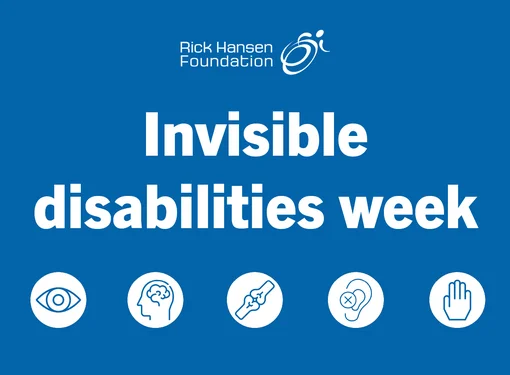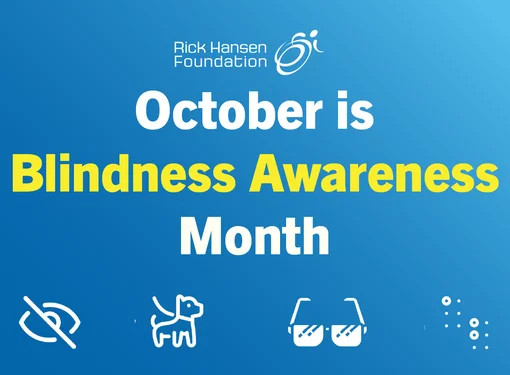Chronic Pain: Living with an Invisible Disability
The purpose of this article is to help raise awareness about the prevalence and complexity of chronic, or persistent, pain. I offer my comments and observations based on my 37 years of living with persistent neuropathic pain.
My pain experience began in August of 1986. I was 16 and involved in a single-vehicle, near-fatal motor vehicle accident north of Prince George, British Columbia. Due to a lack of sleep and alcohol consumption, I fell asleep at the wheel. I rolled my car end over end down a bank, causing nearly fatal internal injuries. As a result of my accident and multiple surgeries, I have lived with persistent pain ever since.
Over the years, I learned to live better despite my pain, by better understanding pain. It is a parasympathetic nervous system response (flight or fight), and our daily experiences affect pain. Everything from your body, to stress, fear, and other emotions can influence pain.
From 2012 to 2018 I volunteered on the board of Pain BC, British Columbia’s leading pain advocacy and education non-profit organization. At one of the meetings, I was having a conversation with a fellow board member who had experienced a spinal cord injury in 1995 and was a paraplegic. While we were talking, he was shifting around in his wheelchair, saying that his pain had recently changed and increased, and it was bothering him more.
At that moment, despite believing that I was knowledgeable and aware of pain, I was struck by the magnitude of my ignorance. I realized that I had assumed that someone who was paralyzed could not feel pain. I offer this as an example of the lack of understanding that exists among many concerning persistent pain, myself included.
An Invisible Disability
In Canada, it is estimated that one in five people live with persistent pain; that is approximately eight million people. It is common for others to not know that a person is living with pain as many of those who do, develop ways to present themselves in public as normal. I refer to this as wearing a mask of normalcy.
Adding to the challenges of living with pain is society’s distorted perception of pain. I would suggest that in Western society, pain is often considered a weakness.
As most persistent pain is not visible, people are often told “it can’t be that bad”, “you’re too young to be in pain”, “but you look fine” and other unintentionally dismissive comments. We live in a society that considers pain as a badge of honour and people are revered for pushing through their pain. Recently, I saw someone wearing a tee shirt that read “pain is weakness leaving the body”. It is this type of negative pervasive attitude that continues to add to the stigmatization of persistent pain.
Putting the Person First
Persistent pain is very complex and effective management and support are not straightforward. While all pain is biological, it is not solely biomedical. This is not a new concept as research going back nearly 50 years focused on the biological, psychological, and social (the biopsychosocial or BPS) model of pain. This model considers the interaction of biological, psychological, and social factors on a person’s pain. Drs. George Engel and Jon Romano are credited with proposing the BPS model in 1977 as an alternative to the biomedical and psychological dominant views of healthcare.
The foundational principles of the BPS model and person-centred care pre-date Drs. Engel and Romano if we consider the work and teachings of Sir William Osler, a Canadian physician (1849-1919). While he is credited with numerous quotes, the one that speaks best to the importance of person-centred care is “the good physician treats the disease; the great physician treats the patient who has the disease.” This statement says so much as it speaks to the fundamental importance of seeking to understand the person and their illness rather than focusing on the illness only. Yet, with all that the first thing that must occur is that people living with pain must be believed and validated.
Caring for Persistent Pain
Pivotal in how healthcare supports and treats those living with pain is education. A 2018 study revealed that “on average, the median number of hours of pain content in the entire [medical school] curriculum was 20 in Canada (2009).”
To best support those living with pain, we need to focus on better healthcare provider education, and this must include the emotional, psychological, social, spiritual, and various other influencing factors of pain.
However, as important to those living with persistent pain is their ability to best help themselves through supported self-management. Self-management is defined as “the skills and behaviours that can help you live well with your chronic condition. Self-management doesn’t replace physical therapies, medication, and psychological support, but it’s a big part of feeling better.” The key part of this definition is that it doesn’t replace physical therapies, medication, and psychological support but the healthcare providers and people living with pain working together collaboratively and equitably.
One in five Canadians lives with persistent pain. While pain is complex and highly misunderstood, those living with pain can be best supported through person-centred care and supported self-management.
This is the best path forward.







